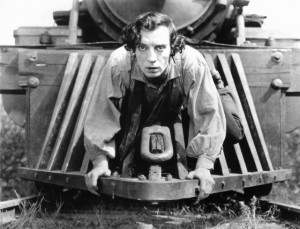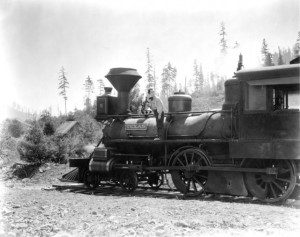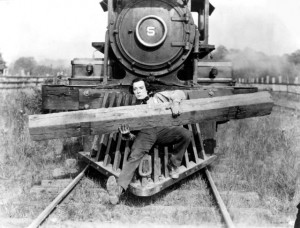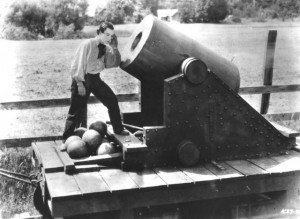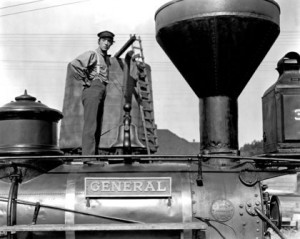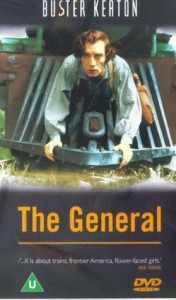The General ***** (1926, Buster Keaton, Marion Mack, Glen Cavender) – Classic Movie Review 731
Buster Keaton stars in this 1926 unchallenged silent comic masterpiece, set in the American Civil War and based on a real incident as told in the story The Great Locomotive Chase by William Pittinger. A hugely-admired masterpiece as one of cinema’s greatest comedies of any era, it’s arguably Keaton’s finest film, though, typically, it suffered a frosty reception at the box office initially.
Keaton plays railway engineer Johnnie Gray, who tries to sign up for service to fight in the war, but is rejected as a too-valuable key worker by the Confederate Army but thought a coward by his girlfriend Annabelle Lee (Marion Mack). She refuses to speak to him again till he’s in uniform.
Some while later, a small band of Union soldiers penetrates far beyond Union lines to steal his crucially-needed locomotive (called ‘The General’ of course) and they capture and make off with The General. Johnnie sets off in hot pursuit to retrieve his beloved train. The soldiers have abducted his sweet-heart too aboard the train. So now it’s up to Johnnie to rescue both his loves.
It helps to keep the film ‘modern’ that there’s very little dialogue so few very inter-titles and little silent-film type emoting and over-acting. It’s very cinematic and propelled by movement as seven of the film’s eight ten-minute reels are devoted to the one long spectacular chase, featuring clever comedy and awesome stunts all performed by Keaton himself.
Highlights include the rescue of heroine Mack from a waterfall and the scene where the engine he is pursuing passes him on a loop track. Filmed on location on the narrow railways of Oregon and near Lake Tahoe in Northern California.
An odd aspect of the film is how it mixes intimate moments of silly slapstick comedy with what’s virtually a serious, realistically staged Western and authentic-looking period piece, with huge crowd scenes and brilliantly managed explosions and crashes. Some of Keaton’s pantomime is daft, crowd-pleasing stuff typical of silent comedy of 100 years ago, though weirdly most of this is still amusing and gets its laughs by taking you by surprise. The comedy’s so ancient it seems fresh and new again.
The simple-minded, soppy romance is very much of its day, and its pro-war attitudes too. But other bits of the film seem incredibly impressive, with lots of motion and movement, and visual splendour thanks to cinematographers J Devereux Jennings and Bert Haines, as well as an astonishing epic scale. These scenes are so breath-taking they leave you begging for more. It’s a strange mixture indeed but, whatever, it works.
‘The General was my pet. It was a page out of history,’ said Keaton. ‘Railroads are a great prop. You can do something awful wild things with railroads.’
Keaton is co-director with Clyde Bruckman, who also wrote the screenplay together.
It was re-released to cinemas in a stunning-looking 4K restoration in 2014, with a striking score composed by Carl Davis, relying slightly too heavily on a couple of famous Civil War tunes. All the old problems of image scratching, missing frames, jerky images and incorrect speed that have plagued the film for so many years have been totally eradicated in a marvellous restoration.
The film’s in stunning condition after one of the best restorations in memory. You maybe expect some colour tinting, but there’s none. It’s all in monochrome.
© Derek Winnert 2014 Classic Movie Review 731
Check out more reviews on http://derekwinnert.com

